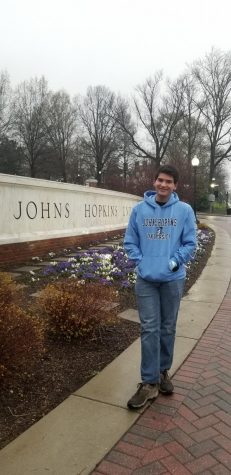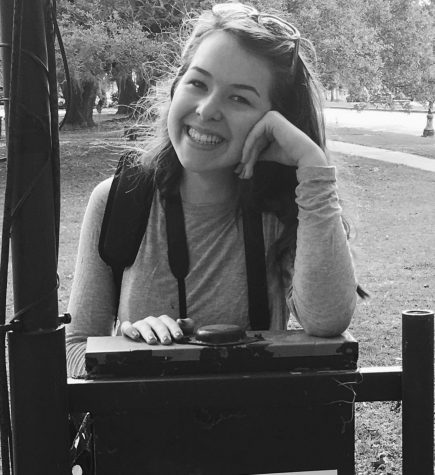Students create Excite club to continue legacy of former program
February 28, 2020
In 2015, Northwestern cut the funding for Project Excite which, according to a Longitudinal Study of Project Excite conducted at Northwestern and published in 2017, provided extracurricular education programming to talented “underrepresented culturally, linguistically, and ethnically diverse” students in District 65 and District 202. With the last bridge program of students entering ETHS occurring this year, physics teacher Mark Vondracek and a group of students have formed the Excite Club with the aim to continue on the legacy of the historic program.
“For as long as people can remember you’ve had the academic achievement gap, and the big question has always been coming through the same schools, same teachers, same resources, same opportunities, why would there be a significant gap between primarily white students and students of color,” Vondracek, who also began the original program in 2000 alongside former teachers John Benson and Ron Selke, said.
The achievement gap has long been a researched aspect of American education, first being mentioned in the 1966 Coleman Report. However, according to Vondracek, few efforts have effectively in addressing the gap, with Excite being one of the few that did.
“Research shows that kids from low-income backgrounds come to school in kindergarten behind their more advantaged peers and it’s not that they aren’t capable but they lack the exposure… They start at a disadvantage and don’t catch up,” Paula Olszewski-Kubilius, Director of Northwestern’s Center of Talent Development (CTD), said.
The goal of Excite was to ensure that these students were able to catch up. Each year, a cohort of third grade students was from five District 65 elementary schools (selected based on the Naglieri Nonverbal Ability Test) and over the next six years participated over 600 hours of after-school, weekend and summer programs both at the high school and through the CTD.
“We were working to make sure these little kids who had academic potential were fully developing their talent. They were clearly kids with high potential for academic achievement so this is part of our work,” Olszewski-Kubilius said.
During its 19-year run, Excite gave students access to the high school, Northwestern and the resources that they offered.
“I was in third grade so I probably wasn’t thinking about the big picture, but it was really fun,” junior Jahnese Adams, current Excite Club secretary, said.
Former members also addressed the importance of being in an education space at a young age with other students of color.
“It was awesome to be learning in an environment with a lot of people who looked like me, other minorities,” junior and former Project Excite member Mika Parisien said. “I would say it was really interesting and a little scary going into it, but it was also one of the best experiences ever, and I learned so much from it.”
While the program was not designed as a research study, the data collected demonstrates the effects of the program and two papers based off of it won the National Association for Gifted Children’s Paper of the Year Award.
“This was a program designed to help students [but] we did the best we could to see if we were having an impact, and the data did show that the students grew a lot and caught up to the high-performing students in District 65,” Olszewski-Kubilius said.
One set of data collected in 2009 shows that a cohort of Excite students increased 76 points on the math portion of the Illinois Standards Achievement Test and 60 points on the reading portion between third and seventh grade bringing the difference between them and the average white student to within five points. For contrast, by seventh grade the score difference between a student in Excite and the average Black student was 40 points.
This trajectory continued into ETHS with more than 76% of students placed in above-grade-level math classes, contrasted with 50% of minority students not in Excite. However, in 2015 Northwestern’s School of Education and Social Policy opted to cut funding for the program, incorporating it into the NU Academy—a program that “provides college access and enrichment programming for Evanston Township High School students,” according to their website.
“I understand that it’s important to work with kids when they get into high school because there is this issue that kids of color don’t get enough college counseling to get into schools that are good for them, but I also think that if you’re going to address achievement gaps you need to start with younger kids,” Olszewski-Kubilius said.
The last of the students in Project Excite entered ETHS this past August, and Vondracek began discussing student-led revivals of the program in his classes—the first club meeting was held on Jan. 22.
“Most kids are convinced when they see the data. Last year’s data both here at the high school and in District 65 is still the same gap as when I started here. All the programs that we have and all the things that we’ve tried, it just hasn’t made a dent,” Vondracek said.
Senior Mayher Matharu is a board member of the new Excite Club; she’s specifically in charge of mentoring and recruitment.
“I think right now we need to focus on the kids that were kind of dropped by District 65 and Northwestern,” Matharu said. “Once we can help them get back on the right track that we created for them in the first place, I think after that we can start focusing on the impact on ETHS in general.”
One way the Excite Club is planning to empower District 65 students is by doing community celebrations where they celebrate their achievements on social media.
“We’re celebrating kids, mostly younger kids, achievements and the smaller things they’re doing. Not just winning an award, but if their grade went up a lot even if they were combatting something at home or if they were third place winner at the science fair and had never taken a science class before, things like that,” Matharu said.
A crucial part of the original program was peer mentors and role models, something that will be continuing into the future both through student mentorship programs and pairing parents of low-income students and students of color at District 65 with those at District 202 so they are able to share resources and advice to support one another.
In addition to mentorship, the club will have a focus on social-emotional learning, something which, according to Vondracek, is becoming ever more essential in a world becoming ever-more filled with change and outrage.
“The data is pretty clear that by working on social-emotional learning skills the bad things [depression, suicidal thoughts, anxiety] go down and academic achievement goes up. The learning environment improves if kids get along better and that translates to the community,” Vondracek said.
The club plans to address these issues through a combination of learning teams, where students take turns checking in with others to monitor their academic and emotional progress, and journaling, where students will write about topics including what they are thinking, feeling and what they are appreciative for.
A main goal of the club moving forward is to expand the base of members who would be interested in doing community work around the achievement gap.
“One thing we really need to prioritize is general reaching out,” junior and board member Eleanor Allen said. “Really connecting to and reaching out to students, not just in the Chem/Phys program, [but] to all students that think that this is a priority.”
Although the club is in early phases of development, the goals it has set and the principles left behind by Project Excite will guide the work that it does moving into the future.
“The achievement gap isn’t just going to be magically fixed in a year,” Adams said. “It’ll be a long time before we see results, but to feel like something is being done and that people are receiving the help and support they need to get to where they can be… we can start to see and feel more of a change.”










